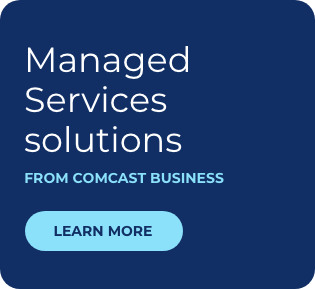The Triumvirate of Business Outcomes Shaping Digital Transformation

The concept of digital transformation is not new, but still, it is often misinterpreted as a goal in itself rather than a means to a greater end. The purpose of digital transformation efforts should ultimately be to drive tangible business outcomes, and that is where CIOs have increasingly trained their focus in recent years. In collaboration with executives managing lines of business, CIOs are putting their technological momentum behind three key areas: enhancing the customer experience, building better employee experiences, and creating “smarter” operations systems.
Enhancing the Customer Experience
Digital transformation is redefining what the store of the future will be. Businesses are no longer just selling products or services. Instead, they are building an environment that puts the customer at the heart of every interaction. From advanced analytics that offer deep customer insights to artificial intelligence tools that can identify opportunities to streamline a shopper’s journey, technology is used to personalize the shopper experience, boosting customer satisfaction and loyalty.
Consider the experience of a large convenience store chain grappling with prolonged customer wait times. This dominoed into full parking lots, deterring potential customers from driving by. To address the issue, the stores deployed sensor technology that monitored foot traffic patterns and optimized product placement and stocking procedures to ensure customers could quickly find what they wanted. This retailer also leveraged ordering kiosks and self-service checkouts to reduce lines and help customers quickly get in, out, and on their way. And when the stores aren’t as busy, sensors can trigger coupons at the gas pumps to entice customers, resulting in more significant transactions.
So, where does a transition like this start?
The journey towards a digitally transformed customer experience begins with a conversation between the business and its technology partner. This dialogue helps identify the business’s unique needs and sets the stage for formulating a technology and managed services blueprint to meet these needs. Once the blueprint is in place, the next step is a proof of concept. This test serves as a testing ground for tech-driven business cases and provides the opportunity to expand what works or pivot based on performance.
Building Better Employee Experiences
Business leaders understand that customer experience is closely linked with employee experience. The logic is straightforward – a happy and engaged workforce will lead to better customer interactions and, therefore, a superior customer experience. Technology plays a pivotal role in this paradigm by helping to create better work environments, boosting productivity, and elevating overall employee satisfaction.
Look at the example of a quick-service restaurant (QSR) chain operating thousands of US locations. In order to ensure food quality and comply with health regulations, employees must manually check the temperatures on all freezers and refrigerated displays twice daily. This process took at least one employee away from customers for approximately 25 minutes per day. This QSR chain installed IoT sensors to monitor temperatures throughout the day automatically. Not only did this remove a mundane manual task from employees, but it also provided round-the-clock data management could use to pre-emptively replace failing equipment before food was compromised while streamlining health inspections by giving an instant digital record of temperatures.
Sensors can also monitor things like coffee carafes, trash cans, toilet paper, and soap in restrooms. Employees can then be alerted when these need attention. This warning keeps the employees from doing the rounds and making manual checks. It also helps create a better customer experience by ensuring service is performed before service is compromised.
Creating Smarter Operations
Intelligent operations involve optimizing business processes, reducing inefficiencies, and leveraging data-driven insights for informed decision-making. The proliferation of advanced technologies such as IoT, data analytics, AI, and machine learning creates unprecedented opportunities for businesses to enhance operational efficiency and productivity, directly contributing to better customer and employee experiences.
Smart, connected operations give businesses real-time access to a wealth of operational data. This accessibility allows them to respond swiftly and strategically to changing market conditions, operational hitches, and customer preferences, thereby maintaining a competitive edge.
Intelligent operations can also help foster an organization's continuous improvement culture. By monitoring and analyzing operational data, businesses can identify opportunities for improvement, implement changes, and measure their impact. This iterative process can lead to sustained improvements in operating performance and business outcomes.
Take the case of a nationwide chain of coffee shops. They cross-referenced data on customer preferences with historical weather data to see how the weather affected food and drink orders. It makes sense that people buy more cold drinks when the weather is hot, but how do you turn that into a strategic advantage across the entire business? That’s where smart operations come in. By combining weather data with automated distribution and logistics planning, anticipated heat waves or cold snaps could be factored directly into ordering workflows through automation, ensuring that stores had everything they needed to handle weather-related buying behaviors. This combination can help reduce the spoilage of perishable ingredients that have gone unused and prepare individual locations to meet increased demand while providing a better customer experience.
Smart operations and digital transformation as a whole are about creating an ecosystem where data-driven insights drive business outcomes. The goal is to build a resilient organization that is not just capable of withstanding disruptions but can also turn them into opportunities for growth and innovation.
Learn how Comcast Business can help you get the most out of your digital transformation. https://business.comcast.com/enterprise
Discover the power of customer-centricity, employee empowerment, and smarter operations.
Locked Content
Click on the button below to get access
Unlock NowOr sign in to access all content on Comcast Business Community
Learn how Comcast Business can help
keep you ready for what's next.










